
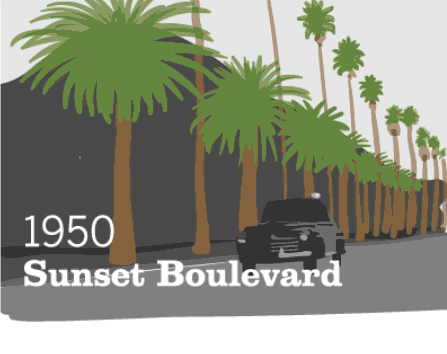
L.A.’s palm trees are dying and it’s changing the city’s famous skyline
Like so many things in Southern California, the palm tree was an import from somewhere else that over time became inextricably symbolic of its adopted home.
But the trees, so identified with the sun-splashed excitement of Los Angeles, are facing a decidedly darker fate. They are dying of fatal fungus and under threat of invasive insects in parks and along streets. And for the most part, the city has chosen to replace them not with new palms but with native trees that are more drought-tolerant and shadier, said Leon Borodinsky, a tree surgeon for the department of Recreation and Parks.
City officials say they don’t know how many palm trees have been lost. In 1990, a city tally put the number of palms on L.A.’s streets at 75,000. That number has declined, officials said, but they are not sure by how much.
"Over the next 50 years, you will see a great loss in palms. It's already begun," added Jared Farmer, the author of Trees in Paradise.
The decline in palm trees is part of a larger trend in L.A.’s treescape. In the next five years, the city will lose enough trees to disease and pests that it will take 30 to 50 years to replenish them, Borodinsky said.
The loss of the palms is particularly noticeable because of their prominence in the city’s streetscape.
In the 19th and early 20th centuries, Los Angeles decorated itself with a diversity of palms to enchant newcomers, Farmer said. The city imported its palm trees from all over the world, since only one species, the California fan palm, is native to the state.

Palm trees flourished in Los Angeles alongside the automobile and expansive freeways. "They came to represent the modern auto-based, decentralized metropolis that is L.A.," Farmer said.
Hollywood sealed the deal as movies turned the palm tree into an internationally recognized symbol of Los Angeles.
"Hollywood creates this connection between palm trees, celebrities, glamour, sex and extravagant riches," Farmer said.
A palm tree's mortal enemy
No threats have proved as deadly to palms as the South American palm weevil and Fusarium fungus. Each can kill a healthy palm tree on its own.
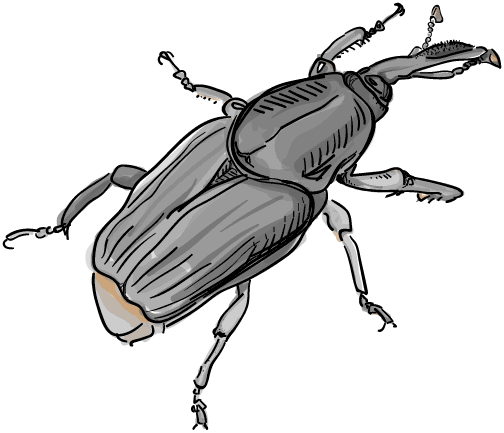
South American palm weevil
The weevil crossed the border into San Diego in 2011 and is on its way to Los Angeles. It has no natural enemies in California or Mexico, where it has killed hundreds of Canary Island date palms.
How it kills
- Palm weevil burrows into the leaf base and lays its eggs.
- Once hatched, the larvae move into the trunk of the tree.
- They begin to eat the tree's core, causing it to rot.
- If the tree is not removed, its crown will eventually fall.
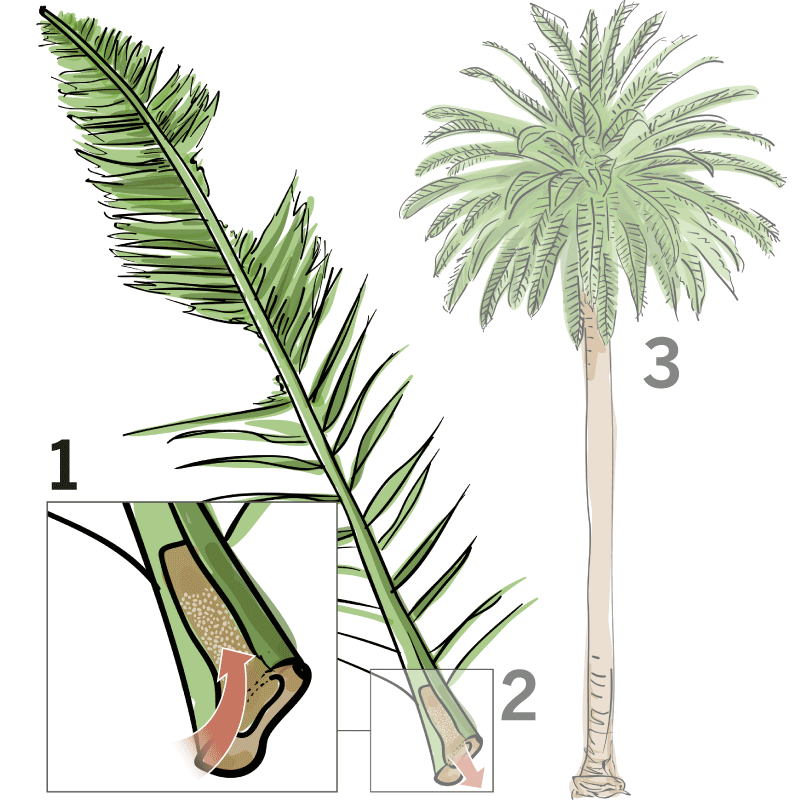
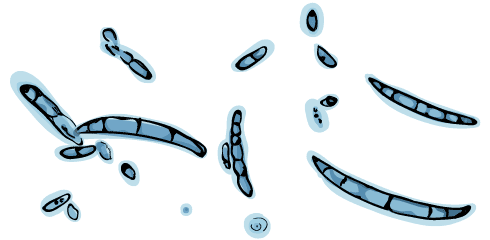
Fusarium fungus
Fusarium, a native fungus found in California soil, usually attacks palms that are overwatered or planted in soil that is naturally wet. It can also spread on infected pruning tools, such as chainsaws.
How it kills
- Fungus in the soil enters the palm tree through its roots.
- Colonized fungus clogs vessels the tree uses to transport nutrients.
- Lower leaves die first, followed by the middle and newest leaves.
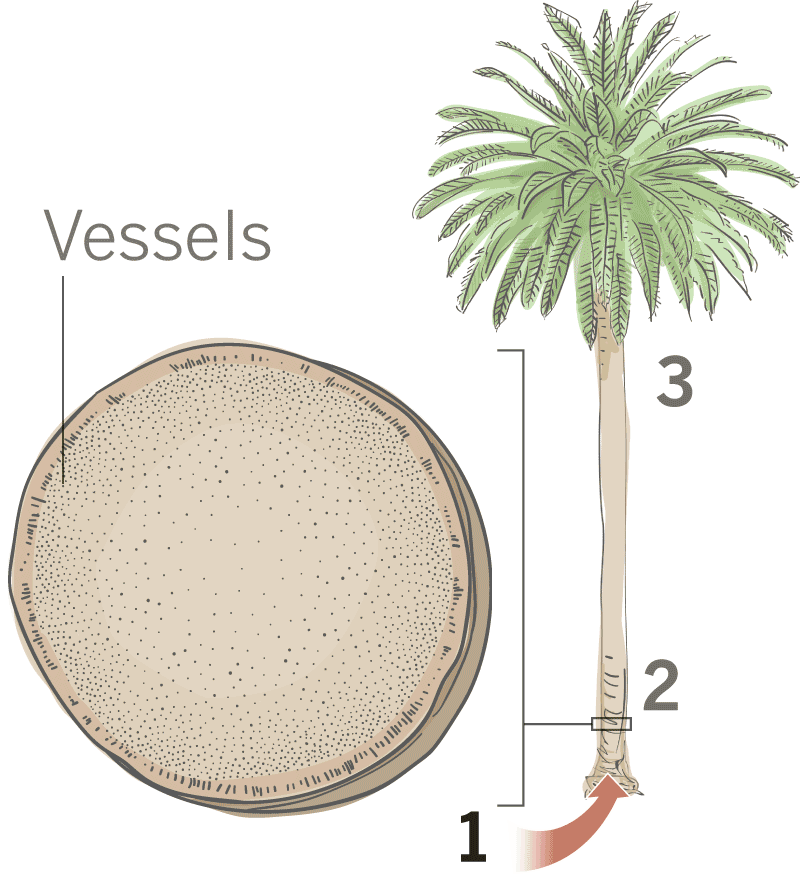
Other threats to palm trees
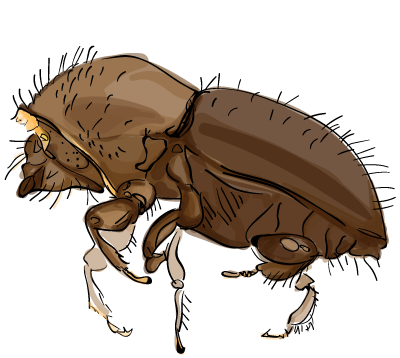
Polyphagous shot hole borer
Scientists first detected the East Asian beetle in Los Angeles county in 2012. By 2017, it has spread to five other counties in Southern California. Ten types of palms are susceptible to the beetle, which carves tunnels in palm trunks to lay its eggs.
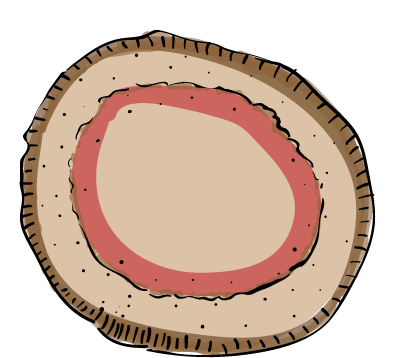
Red ring
The South American palm weevil can carry a worm that causes a red ring visible in the cross-section of an attacked palm's trunk. The worm has not reached California, though Researchers say a pathogen like this usually follows closely behind its host.
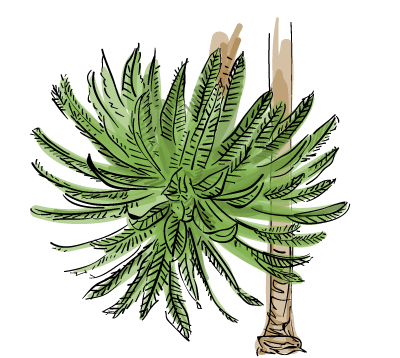
Sudden crown drop
The inside of the trunk decays, weakening the structure of the palm. Eventually, the "pineapple," or top of the palm, topples to the ground. Canary Island date palms are particularly susceptible. The disease is spread through unsterilized tools, mulch made of infected palms and improper irrigation.
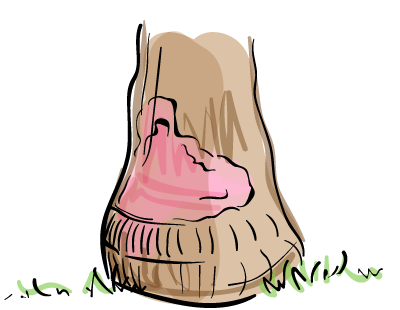
Pink rot
This disease stunts the growth of new leaves and may eventually cause the trunk of the tree to rot. The fungus grows pinkish spore masses. Palms that are planted too deeply, overwatered or already battling other diseases or infestations are most susceptible to pink rot.
The prime target
The Canary Island date palm has suffered the most. Its demise can already be seen in Elysian Park and around Echo Park Lake.
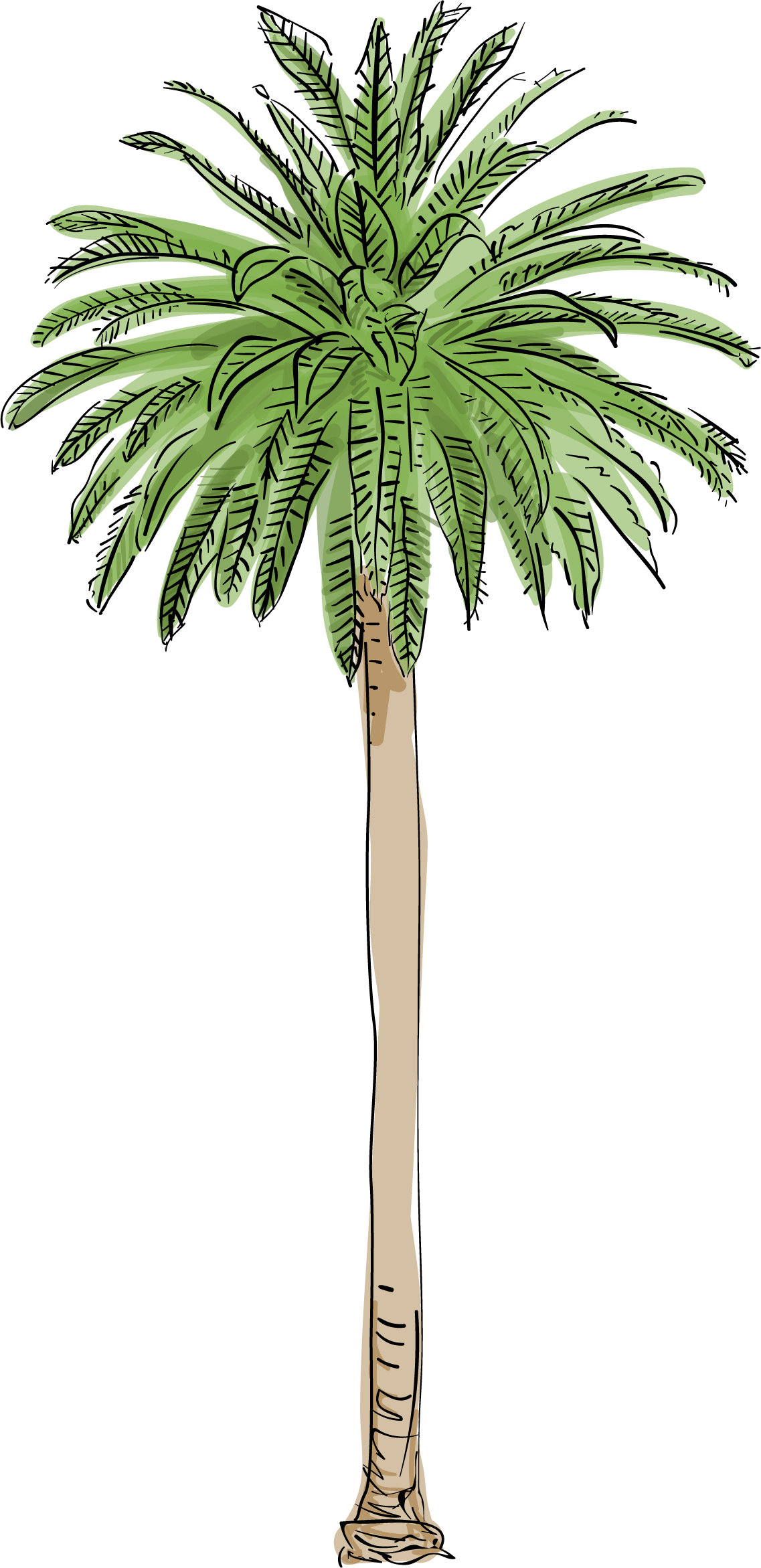
Canary Island date palm
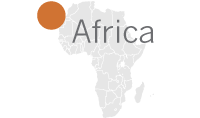

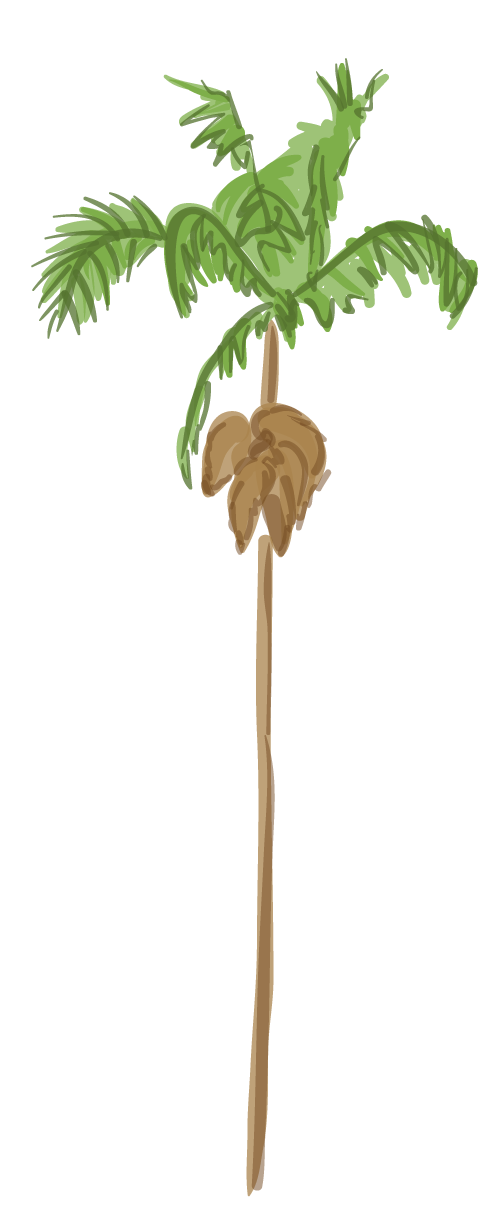
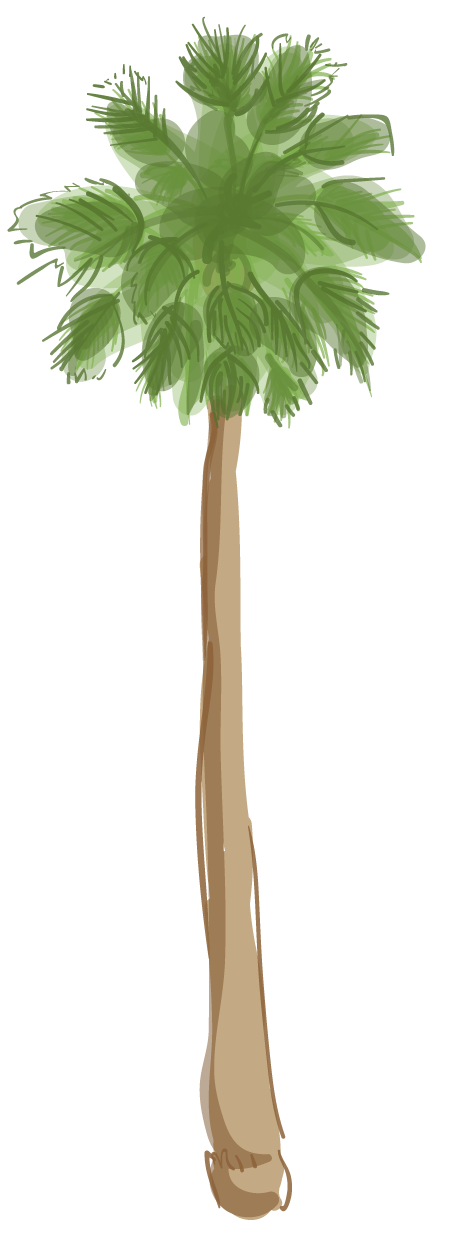

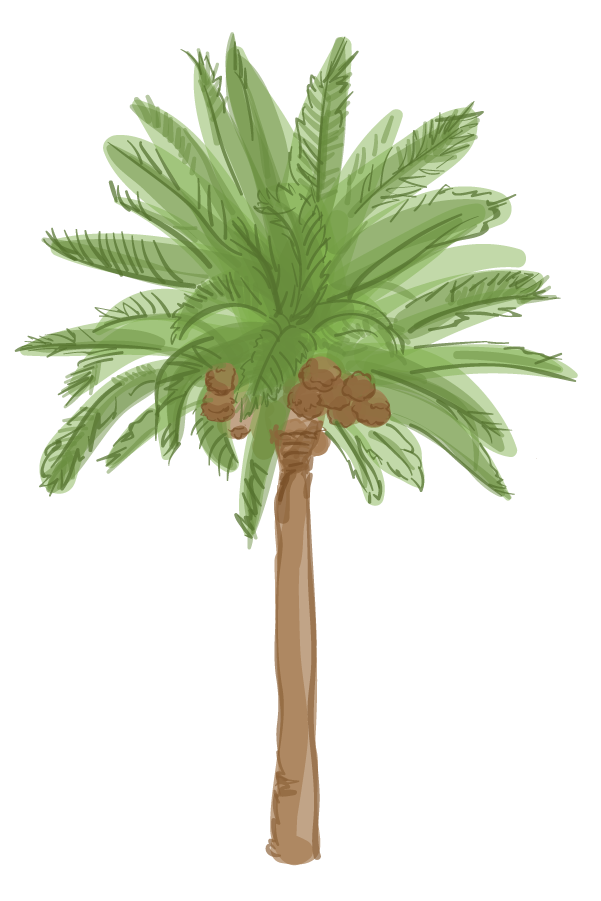
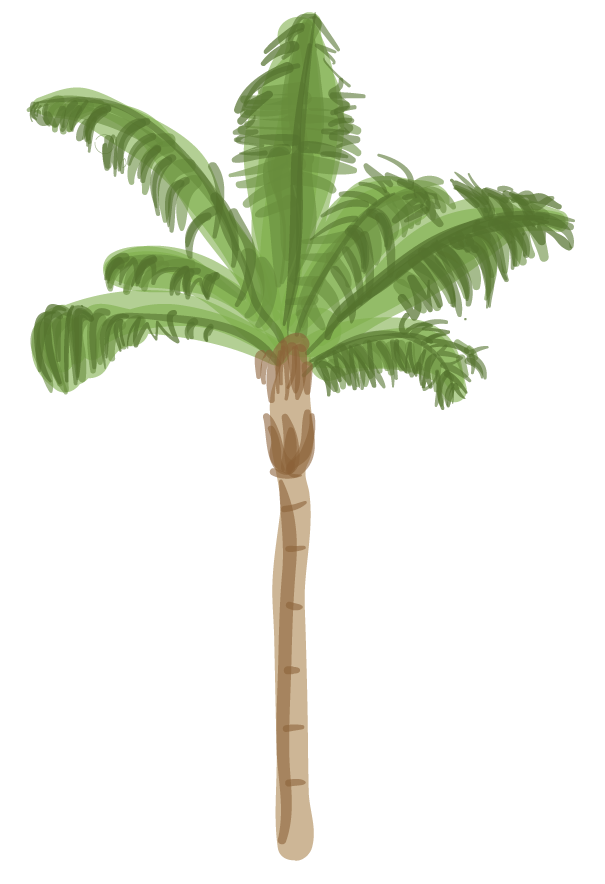
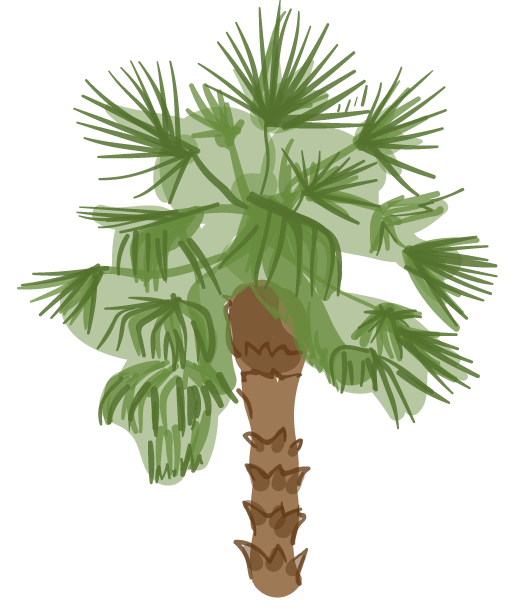

In the 20th century, the Canary Island date palm was a symbol of status, Farmer said. Now, it's on track to disappear first, according to Donald Hodel, a horticulturist for the University of California.
The palm is the most expensive and desirable species of palm. A mature tree can cost as much as $20,000.
The city as a reluctant hero
In the 1980s, Fusarium fungus started suffocating the Canary Island date palms that form Avenue of the Palms in Elysian Park near Dodger Stadium. The city stepped in to replace the double row of trees in 2014, planting more than 100 palms that cost about $50 each.
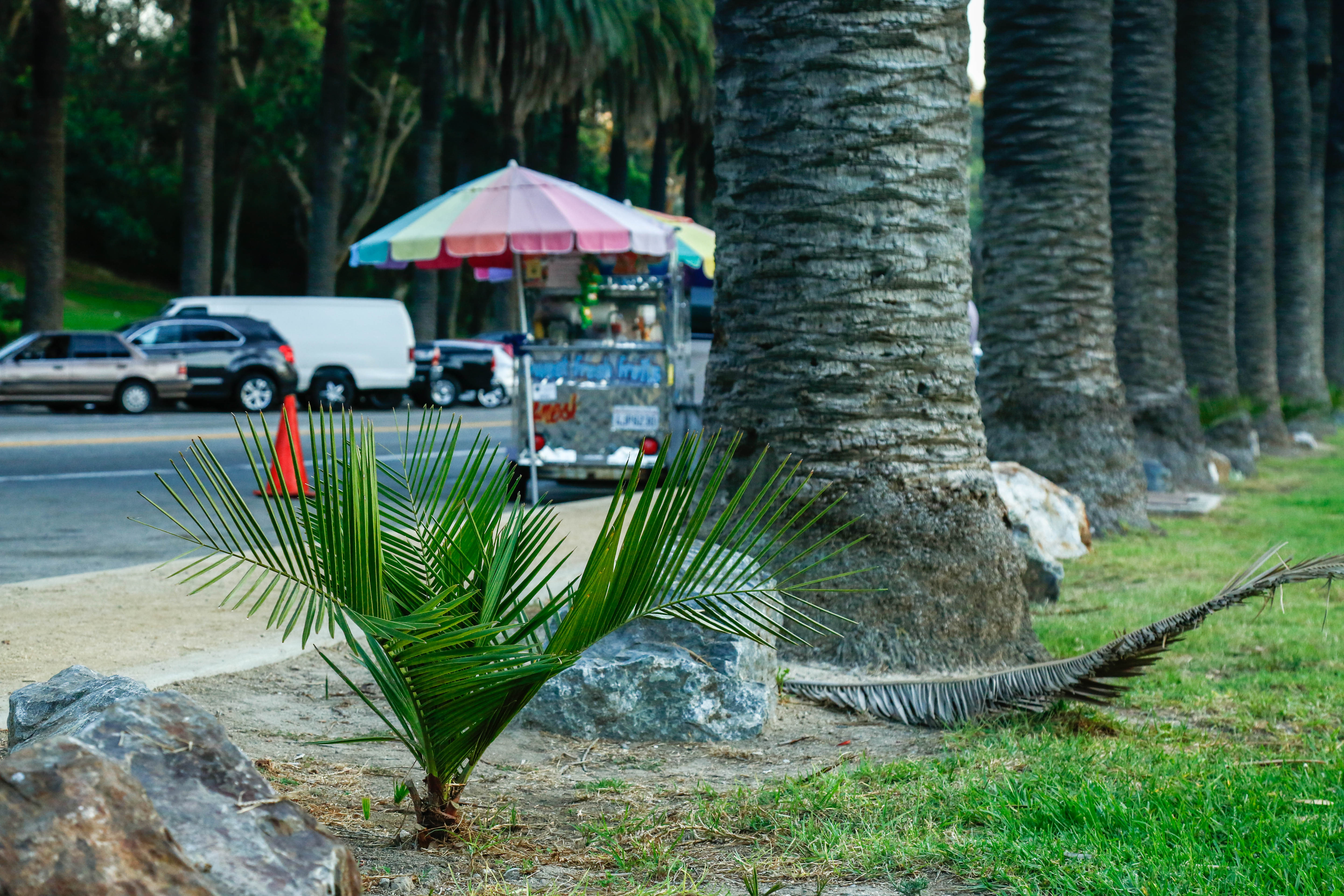
Young Chilean wine palms were planted between each 50-foot date palm. As they grow, they fill the space their predecessors will eventually leave empty. Planted three years ago, the new palms are barely knee-high. It will take years for them to even show a recognizable trunk.
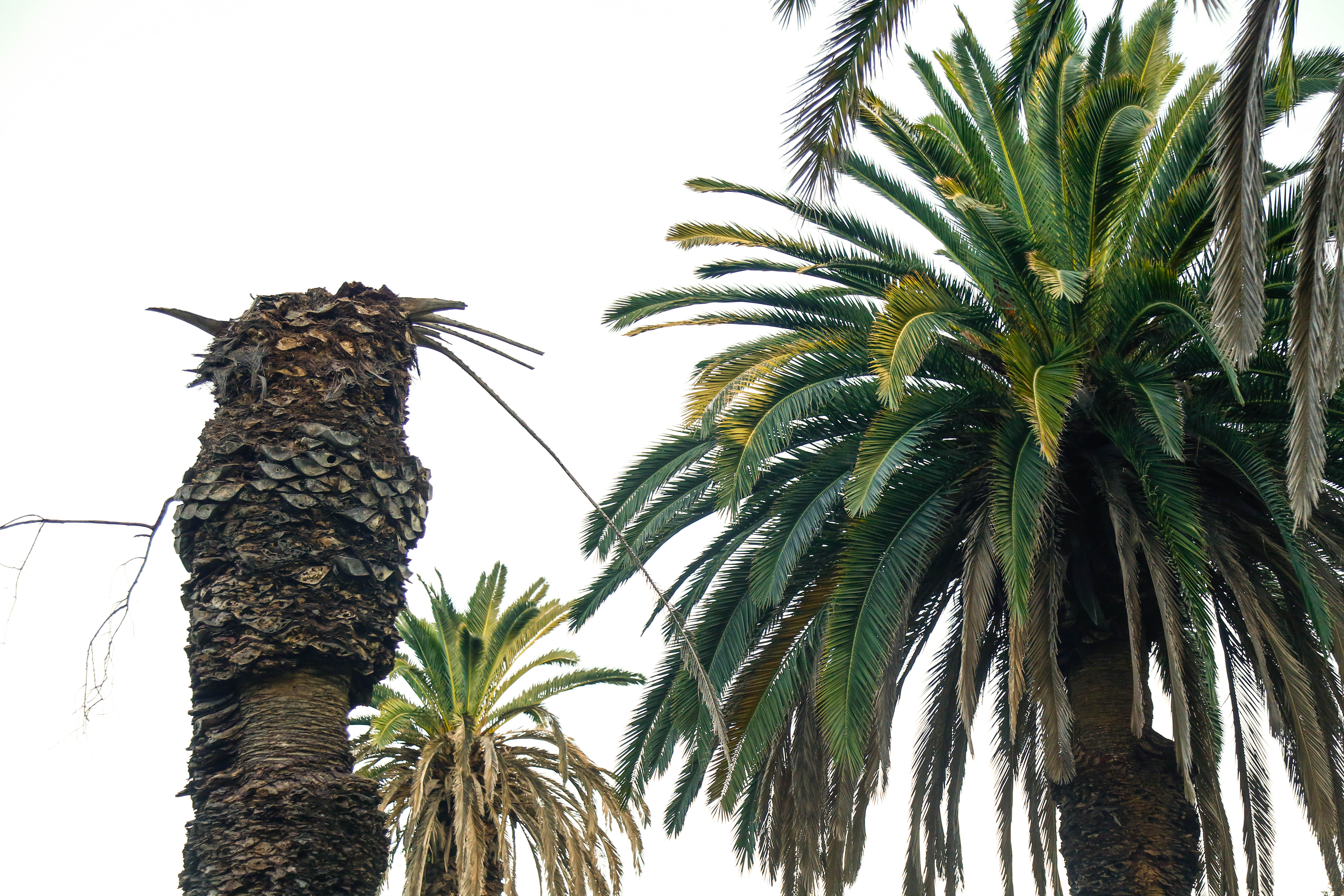
That solution may not work for the rest of the parks and city streets.
Los Angeles has new problems and priorities, becoming increasingly concerned with urban heat, pollution, water usage and shade.
Unlike most trees, palms don’t alleviate these environmental concerns. They have more in common with grass than trees, so they don’t fight pollution and don’t provide significant shade in the blistering summer heat.
The survivors
There will probably be palm trees in Los Angeles for decades, or even into the next century. Developers and homeowners are likely to continue planting palms on private properties despite the threats the trees face.
And while the city will not replace every palm, it has vowed to maintain trees in areas that are iconic or have historic significance. So far, six areas have been identified.
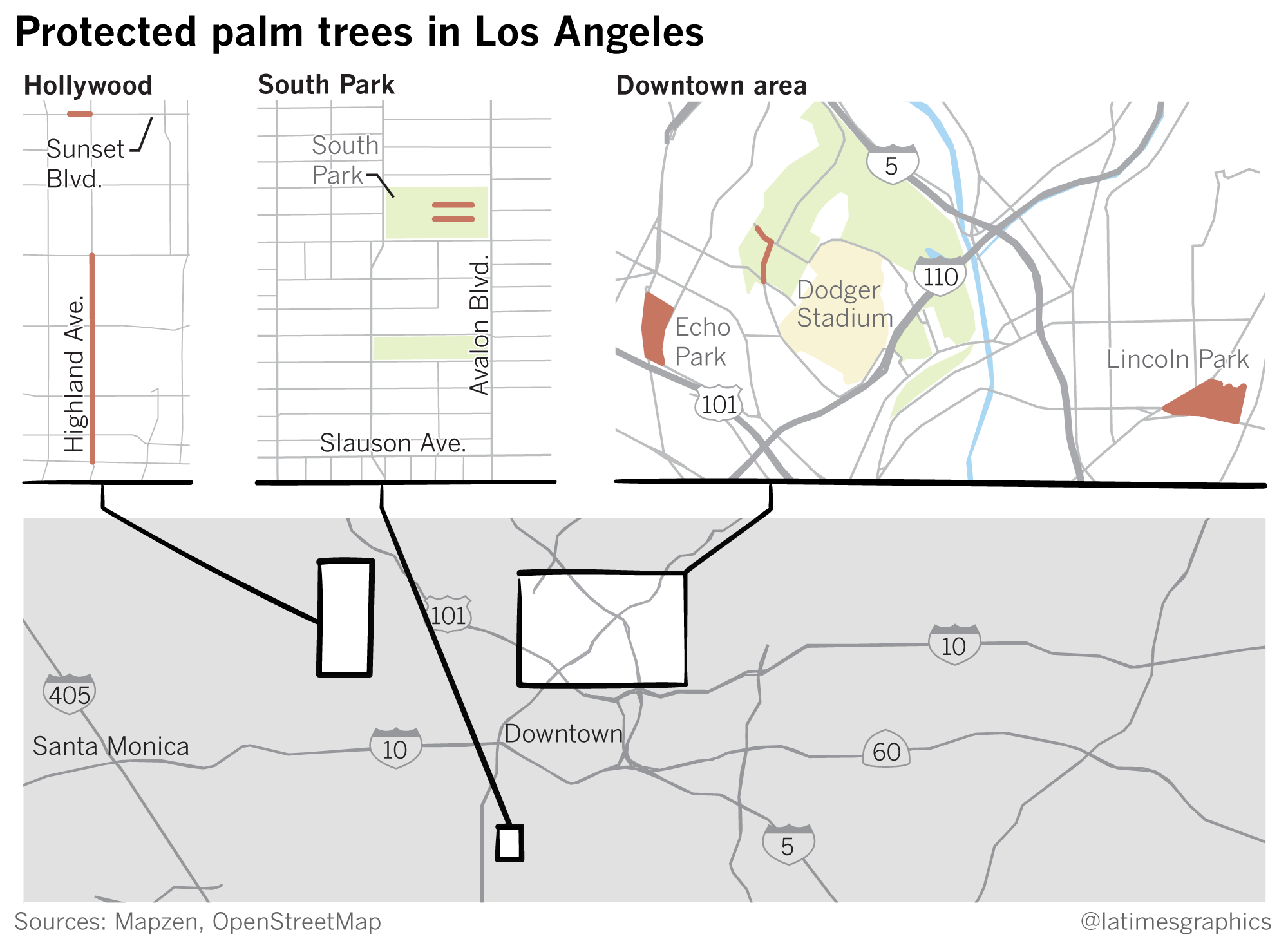
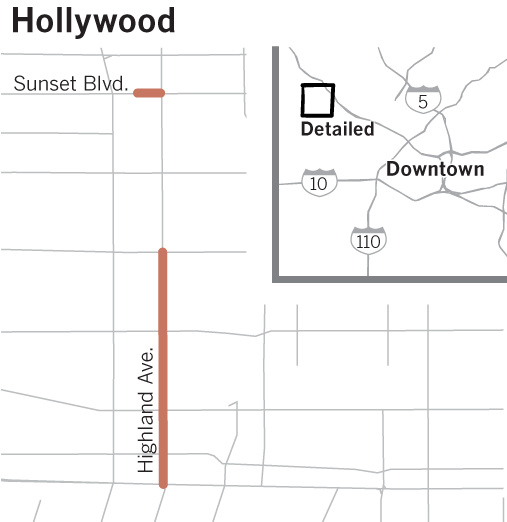
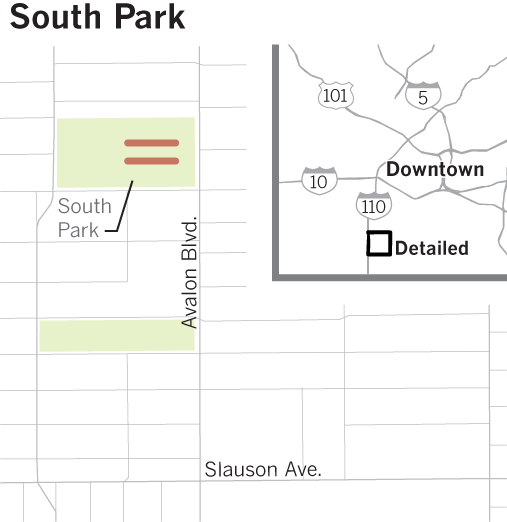
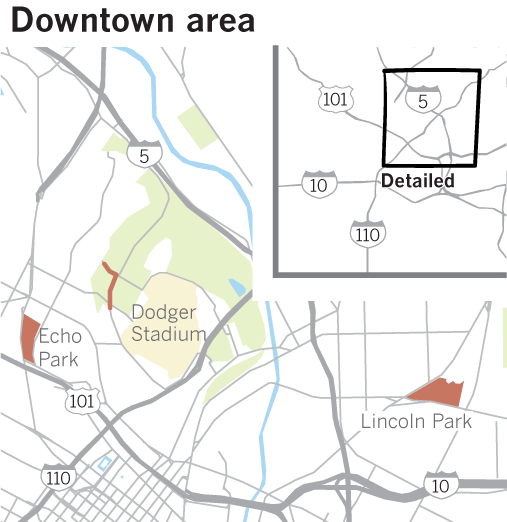
The death of a star
While palms once epitomized glamour, they may find a new role in film.
“The great dying of the palms will be useful to Hollywood too,” said Farmer, who is a history professor focused on the North American West.
“They love to show how L.A. is dystopian — the American experiment gone wrong."
Or perhaps the palm-lined streets that seduce tourists and locals alike could simply fade into memory.
"Landmarks come and landmarks go," Farmer said.
The palm tree could simply be a 20th century obsession.
Help save L.A.'s palm trees
California residents can help prevent the spread threats to palm trees. It starts with being observant. Look for signs of infestation and take extra precautions even when no infestation is detected. Researchers from the Riverside Invasive Species program said residents should not move palms and palm tree waste from one area to another. Also avoid using chainsaws to prune palm trees. If pruning a tree is necessary, use a flat edge blade that has been sterilized to remove remaining fungus. Californians should also refrain from transporting firewood. Instead, buy firewood at the location where you will burn it because the PSHB lives in firewood.
Report signs of the South American palm weevil.
Report signs of the Polyphagous shothole borer.